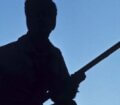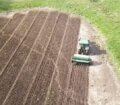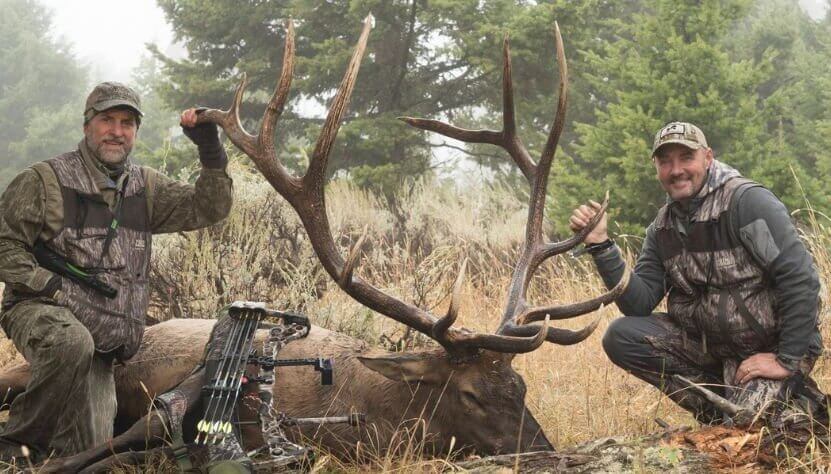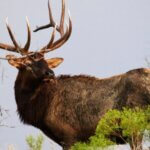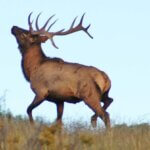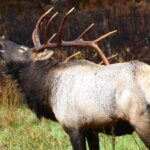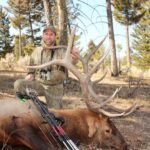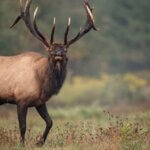Editor’s Note: Will Primos of Flora, Mississippi, has been hunting elk every year since 1988. “I’ve had some fantastic opportunities in my lifetime to call in hundreds of bull elk,” he explains. Primos, the creator of Primos Hunting (https://www.primos.com/) and generally hunts for elk in three states annually. He’s been producing videos and products for the elk-hunting industry for many years. “We wanted to get the public excited about not just elk but hunting and protecting them as well,” Primos says. “We’re strong supporters of the Rocky Mountain Elk Foundation and its mission.” Primos doesn’t just call and take elk himself, he also guides and calls for other people. Primos has taken or called more than 200+ elk for others for his videos.
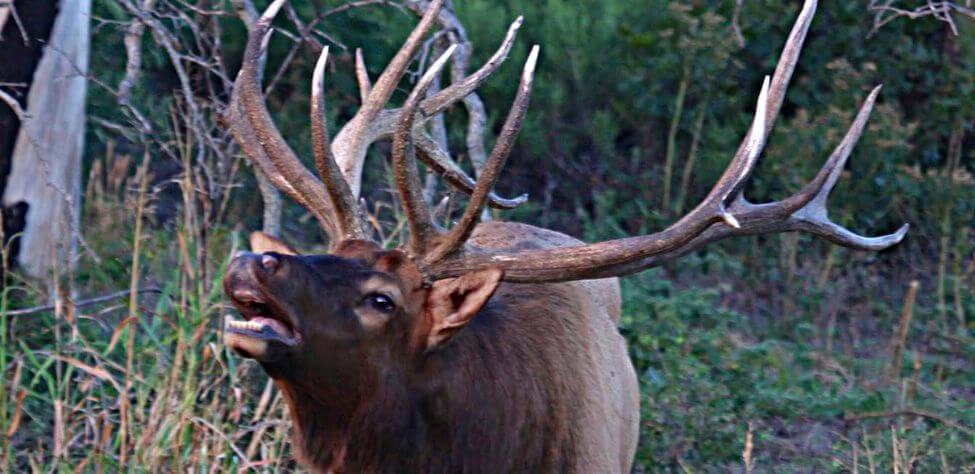
When we hear the elk bugle or reach the spot where we want to call, the shooter, the cameraman and the caller usually will be standing together. One of the three of us will make a call, and hopefully the elk will bugle. The caller then will start walking behind the shooter and the cameraman. While he’s walking, he’ll pick up a limb and hit it on the side of a pine, making a cracking sound. When he sees a rock, he’ll kick it down a hill, doing the best he can to sound like an elk stomping and running around. Elk are very-noisy animals, and the caller’s racket will spook a whitetail. However, that same loud noise will call a bull elk.
One of the most-important elements of being a successful caller (before the caller walks off behind the shooter and the cameraman) is to look for a landmark that he can see 75-150 yards away from the other two. Once the caller determines that he’s 75-150 yards away from the shooter, he’ll either go to the right or the left side of the shooter, depending on which way he thinks the bull will move toward the shooter. But the caller’s definitely not being quiet when he’s trying to get into the position to stop the elk by calling.
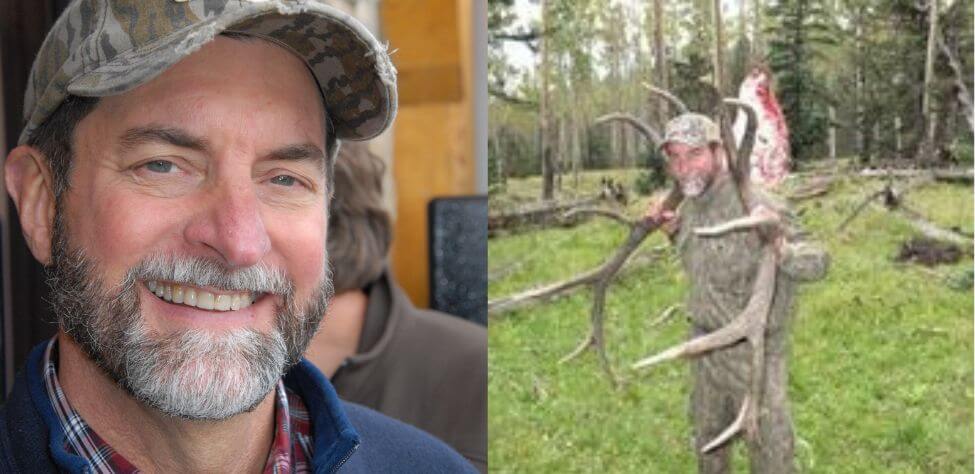
We currently have a signal, which is three, quick, fast moos that tell the caller to come back toward us because we’ve either made the shot, or we want to regroup and move. Remember that generally the caller may not be able to see us and/or see the bull coming in, and he probably won’t be able to see or hear when we shoot. Once the caller finally reaches the distance that he wants to be from the shooter, he’ll be giving cow calls, breaking sticks and throwing rocks down the hill. If he can’t hear the elk bugle or growl, he’ll go silent and won’t call or make elk sounds. The caller may see the bull coming in-between him and the shooter. When he shuts up, the shooter and the cameraman will wonder what’s happening. The shooter or the cameraman may bugle or growl to try to get the bull to come in to the shooter. So, there are a lot of sounds that a caller needs to make that aren’t elk calls. If you’ve ever listened to a herd of elk walking through the woods, you know they make quite a bit of noise. If you can simulate that noise and add elk calls to it, then you’ve got a better chance of pulling that bull in front of the shooter.
When the shooter spots the elk coming through the woods, he must make a decision. If the shooter decides he’s shooting the bull, he never looks at the elk’s antlers or head again. Instead, the shooter looks at the spot where he wants to place the arrow. The shooter also analyzes the angle that the bull is coming toward him, because no one wants to take a head-on shot or to shoot when the bull’s sharply angling away from him. The shooter pays attention to the elk’s front legs as well. If legs are forward, exposing the kill zone, he can shoot. The shooter also notes the tree or the rock that the bull has to walk by to know the range that he is from the bull.
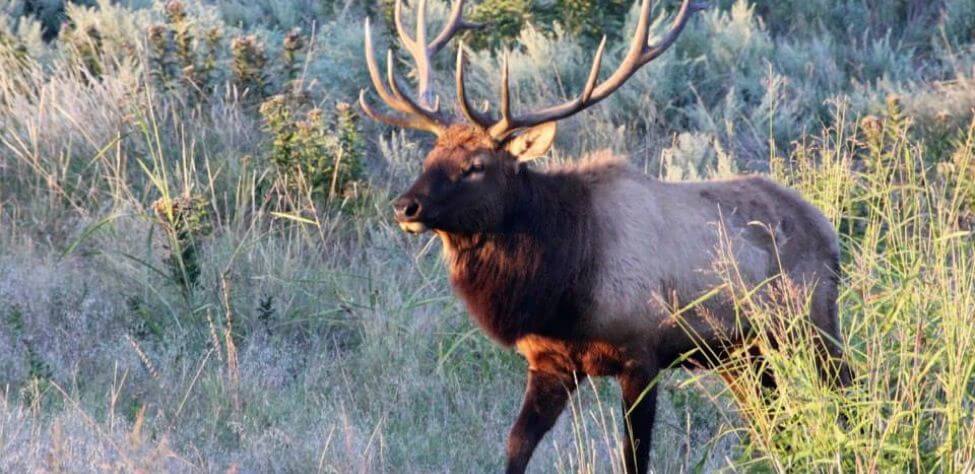
I never shoot an elk if I don’t know the range I am from him. My number-one rule is: if I don’t know the range, I don’t shoot. Many times, when you see a huge elk coming in, you’ll think he’s 20-yards away when he’s really 35-yards away. Knowing the range allows you to shoot accurately. When the elk’s head goes behind s tree or a rock, the shooter makes his draw. Once the elk steps out, the shooter or the cameraman makes a really soft mew (cow elk call) to stop the elk. When the elk stops, my sight pin is already behind the elk’s shoulder, and I can release the arrow.
Another thing that you shouldn’t do is take an elk when he’s walking. I took a shot at a walking elk in 1990 when he was only 18-yards away, I told myself, “This is a piece-of-cake shot.” I aimed right behind the bull’s shoulder, and my arrow hit 16 inches behind the spot where I’d aimed. I hit the elk in the gut. I spent the next day looking for my elk until I found him. So, I learned my lesson. Since that day, I always try to stop my elk before I shoot.
Looking for more content? Check out our YouTube channel and watch “You Won’t Believe What Will Primos Did” with Jimmy Primos by John E. Phillips.
Expert Guidebooks on Elk Hunting: Best Sellers
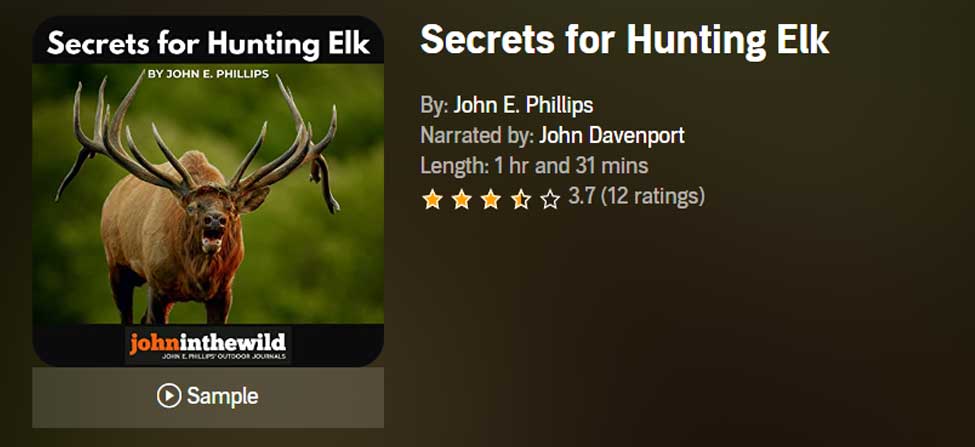
Secrets for Hunting Elk
The quickest, easiest (if there is an easy way), and safest way to find and take that bull elk of a lifetime will be to hunt with a guide.
Chad Schearer, a longtime Montana guide and TV personality, told me, “My hunter is my gun. If I get to the elk, and my hunter isn’t with me, then we don’t take the elk. My job is not only to find the elk but also to help the hunter get to the elk and make the experience as enjoyable as I can for him.” That’s the kind of fella with whom I want to go elk hunting.
An elk hunt can be tough, but it doesn’t have to be so tough that you don’t enjoy it. That’s why this elk hunting book starts with the confessions of an elk guide and with Chad Schearer’s philosophy of what the guide and the hunter’s relationship should be.
A good portion of your success will depend on your physical condition, and Matt Morrett of Harrisburg, Pennsylvania explains how an eastern hunter can get ready physically during June and July to hunt western elk, the animals he describes as, “Like deer or turkeys on steroids.”
Wayne Carlton, well-known elk hunter and TV and video personality from Montrose, Colorado, tells us what types of elk calls to use and what to say to the elk. Mike Miller of Colorado, another elk guide and Mossy Oak video personality, has tactics for the best equipment for bowhunting and gun hunting elk.
You’ll learn helpful strategies and hunting tips in this book, as well as some straightforward hunting methods that will help to make your elk hunt more successful.
“Thanks to the advice in your elk hunting books, I was able to call up a nice 6-point (6X6) bull elk! He was bugling like crazy. I called him in from about a ¼ mile away. Called him into bow range (about 40 yards away). It was a thrill!” ~Rob Brannon
VERSIONS: AUDIBLE & KINDLE
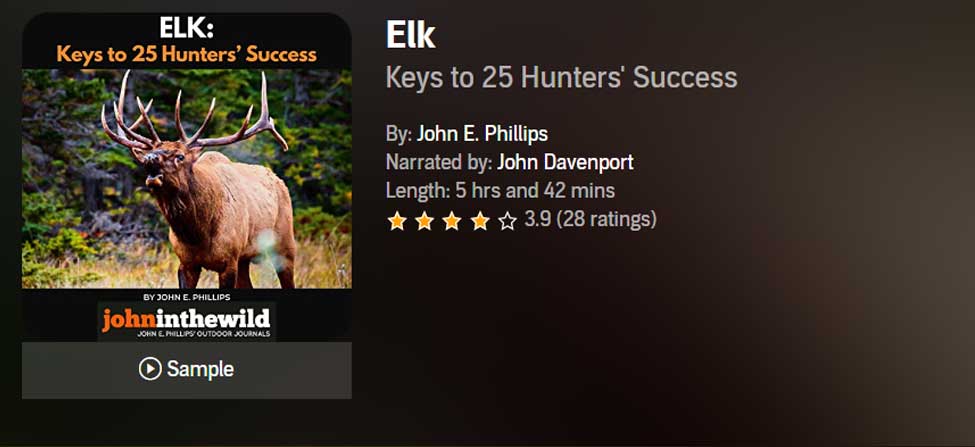
Elk: Keys to 25 Hunters’ Success
Often just one tip or tactic makes the difference in whether you take an elk home to dinner or have to hike back to the truck by yourself. In John E. Phillips’ latest elk book, Elk: Keys to 25 Hunters’ Success, you’ll learn from successful elk hunters the strategies they use to find and take elk.
Many know that the technique that seems to work most often is to hunt where other elk hunters don’t and understand where the elk are before you go on a hunt by studying data from each state, visiting HuntData (see chapter 1), examining maps, and reading postings on elk forums.
This book also tells you how to get ready physically for an elk hunt, including participating in Train to Hunt Competitions, what gear you need to take, how to enjoy a successful do-it-yourself elk hunt, or how to pick the best elk guide for you. You’ll also hear about the X System and the Broken Y System of hunting elk.
Although no one person has all the answers on how to help you find and take your elk, I’m convinced that this book’s outdoors men and women will teach you how to have satisfying elk hunts.
As my friend Karl Badger once told me, “Elk hunting doesn’t get any better than when I ride horses into the high backcountry, see two grizzly bears, hear a pack of wolves howl close to camp all night long, eat plenty of delicious food prepared on a fire and enjoy the company of good friends.”
VERSIONS: AUDIBLE, KINDLE & PRINT
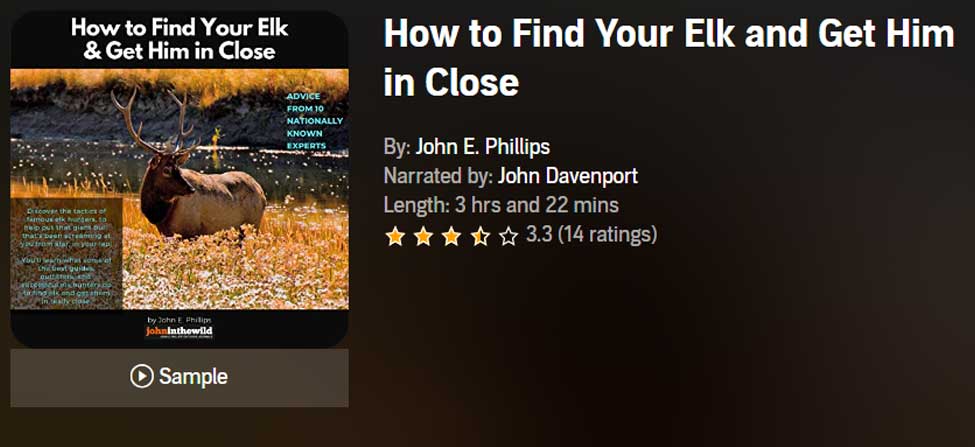
How to Find Your Elk and Get Him in Close will teach you the tactics of 10 nationally known elk hunters, to help put that giant bull that’s been screaming at you from afar, in your lap. You’ll learn what some of the best guides, outfitters, and successful elk hunters do to find elk and get them in really close.
Also in this audiobook, you’ll notice that the majority of the experts call elk to within bow range. We selected numerous bowhunters and bowhunting guides, since the bowhunter has to get much closer to a bull than the gun hunter does – often less than 20 or 30 yards – practically in your lap.
On one elk hunt, I’d heard this bull bugle all morning. My guide had called him within 30 yards, and he was standing just inside black timber. I saw the smoke from his nose wafting out into the icy air less than 30-yards away. All the bull had to do was step out, and I could take the shot with my bow. But then, through no fault of my guide or me, the bull vanished.
The only conclusion I could come up with to understand why the bull I wanted to take with my bow hadn’t stepped out and given me a shot, was because he got raptured. He evidently had left the earth with no trace of himself.
This hunt was when I started wanting to learn more about hunting elk up close. In this book, I’ve tried to find some of the most knowledgeable, experienced, and practical elk hunters. I’ve always found that the best way to learn any outdoor skill, is to either hunt or fish with the best sportsmen in that field.
Often, in elk hunting, that means elk guides, who generally hunt every day of the season and receive a salary for every hunter they guide. So, I’ve put together a group of some of the best elk hunters I know to help us all learn how to find bull elk and get them in close.
VERSIONS: AUDIBLE, KINDLE & PRINT

